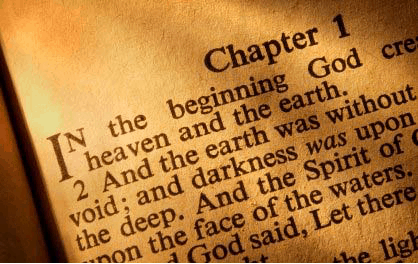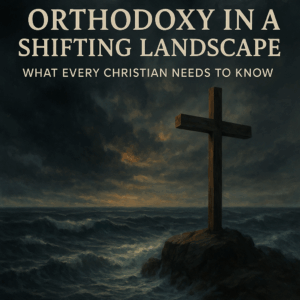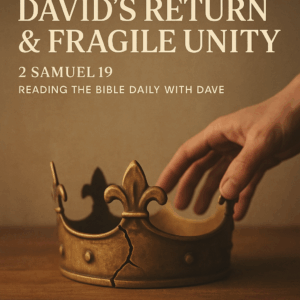⏱️ Estimated Reading Time: 16 min read
Young earth creationists, or rather biblical creationists, are often accused of being over-literal in their interpretation of Genesis 1. Regrettably, this accusation caricaturizes this position as a “literalistic interpretation”, which is unfortunate since biblical creationists explain their hermeneutic as “grammatical-historical interpretation”. This article will argue that, when we read Genesis 1 in its context, it should be understood as a historical account which teaches that God created everything in six 24-hour days.
The discussion over the days of creation is often shaped by the way it is framed by those who caricature the biblical creation position. For example, Old Testament scholar, C. John Collins, often uses the “literal” approach to Genesis in a negative way:
I have given reasons against a literalistic reading of Genesis, and this literalistic reading is the one on which the supposed conflict is based.
By stereotyping our position as “literalistic”, Collins and others try to show how it is wrong, advancing their own interpretation as the correct one. When it comes to reading the material in Genesis 1–11, Collins believes the “author was talking about what he thought were actual events, using rhetorical and literary techniques to shape the readers’ attitudes towards those events.”
Crucial to his discussion of Genesis 1–11 is how he defines history. Collins describes Genesis 1–11 in its form as “history like” with a “historical core”. For Collins, Genesis 1–11 is historical in the sense that the events recorded within it actually happened. However, the description of those events is symbolic since the author uses rhetorical and literary techniques. The high level of (supposed) figurative and pictorial language means that the passage, therefore, should not be seen as literal. In fact, Collins constantly warns against a literal reading of Genesis 1–11.
I will argue that the literary genre of Genesis 1 should be understood as a historical account, events that took place in time-space history, which teaches that God created everything in six 24-hour days. I will then deal with the main objections to this, specifically looking at Days 1, 4, and 7.
Literal Interpretation of Genesis 1?
The understanding of Genesis 1 by biblical creationists is that the events of Genesis 1 are a reliable, historical account of the creation of the world and humanity since they were divinely revealed by God to Moses (Exodus 20:11, 31:17–18). Because all Scripture is God-breathed (2 Timothy 3:16), it is trustworthy and authoritative when it comes to history, and thereby is trustworthy in the scientific inferences from that literal history (e.g., since the earth was created before the sun, according to Genesis 1, the earth did not evolve by the laws of chemistry and physics from a solar gas cloud around the sun).
Biblical creationists interpret Genesis 1 using the historical-grammatical approach, which means taking the text plainly according to its literary genre. This approach understands Genesis 1 as historical narrative, which of course takes into account such things as metaphors and figures of speech (Genesis 2:23, 4:7, 7:11). The plain meaning may be understood as “the meaning intended by the human author, as that sense can be plainly determined by the literary, and historical context.” Therefore because of the negative connotations associated with a “literal” interpretation of the Bible and Genesis 1, it is better to say “grammatical- historical interpretation.”
The interpretation of the Genesis 1 account of creation is crucial in understanding discussions about evolution and the age of the earth. For example, if Genesis 1 teaches that creation took place in six 24-hour days, which indicates a young earth, then it rules out the millions of years claimed as fact by secular scientists for the age of the earth.
Literary Genre of Genesis 1
The literary genre of Genesis 1 has been a much-debated issue among old-earth scholars who have given a number of suggestions to consider: legend, myth, poetry, theological history, hymn, and exalted prose narrative. There are, however, several compelling reasons to believe that Genesis 1 is a historical narrative portraying real events that took place within six 24-hour days (Exodus 20:11, 31:17).
First, the literature of Genesis 1:1–2:4 is plainly a narrative, albeit with extraordinary content; in that sense it is “a unique piece of literature.” The fact that Genesis 1 is “a unique piece of literature”, however, does not indicate that it is a unique genre. Gerhard Hasel correctly states, “It is hardly sui generis [unique] in an exclusive literary sense which will remove it from communication on a factual, accurate and historical level.”
At a grammatical level, the Hebrew verb forms in Genesis 1 show that it is a narrative. The waw-consecutive “is an essential characteristic of narrative adding to the past narration an element of sequence… It appears 55 times in the 34 verses in Genesis 1:1–2:3.” If “the text was not meant to be taken sequentially, why did the biblical writer employ this narrative device so freely?”
Furthermore, while there is debate over artistic features in Genesis 1, there are convincing textual indicators that it is not poetic. Genesis 1 “contains little or no indication of figurative language. There are no tropes, symbolism, or metaphors.” What is more, one of the main characteristics of Hebrew poetry is missing, namely, parallelism. This is seen in the Psalms, for example, where a statement is made and then the same idea or its opposite is said in different words. So Psalm 19:1–2 (NIV), an example of synonymous parallelism, says, “The heavens declare the glory of God, and the sky above proclaims his handiwork. Day to day pours out speech, and night to night reveals knowledge.” Such construction is not found in Genesis 1. Nevertheless, even if it were demonstrated that Genesis 1 is a poetic text, this would not mean that it cannot also be an accurate revelation of details of actual history.
Others have argued that because Genesis 1 contains symmetry, it is not a normal historical narrative but rather is an “artistic arrangement”, whereby its emphasis is theological not historical. The literary theorists, however, propose a false dichotomy between history and theology. Why can’t the text be addressing both? The Bible’s historical claims cannot be separated from its theological claims. Yet even if Genesis 1 does contain symmetry, “Why, then, must we conclude that, merely because of symmetry arrangement, Moses, has disposed of chronology?”
The symmetry that has persuaded many scholars of the literary arrangement in Genesis is the supposed parallels between the days:
| Environment | Contents |
| Day 1 Light | Day 4 Luminaries |
| Day 2 Water and sky | Day 5 birds and sea creatures |
| Day 3 Land and plants | Day 6 Land animals and man |
| Day 7 Sabbath | |
However, when examined carefully, the supposed parallels between Day 1 through Day 3 and Day 4 through Day 6 are not there:
- Light on Day 1 is not dependent on the sun, as it was created on Day 4. Secondly, the waters existed on Day 1 and not only on Day 2.
- Water was made on Day 1, but the seas were not made until Day 3. The sea creatures of Day 5 were to fill the “waters in the seas,” which were created on Day 3, not Day 2.
- On Day 2 it was not the sky that was created but the expanse raqia to separate the waters below from the waters above.
- On Day 4 we are told that God made the sun, moon, and stars and placed them in the expanse raqia (Genesis 1:17) created on Day 2, not on Day 1.
- Man was created on Day 6 not to rule over the land and vegetation (Day 3) but over the land animals created on Day 6 and the sea creatures and flying creatures created on Day 5.
Unfortunately, the literary theory, a more “sophisticated” approach to Genesis 1, seeks to de-historicize the text. Furthermore, it has to be asked “whether the Israelites thought of this text in only literary/theological terms. This view risks reductionism and oversimplification.” Reformed theologian Herman Bavinck sums up how Scripture speaks of the creation account:
When it speaks about the genesis of heaven and earth, it does not present saga or myth or poetic fantasy but offers, in accordance with its own clear intent, history, the history that deserves credence and trust. And for that reason Christian theology, with only a few exceptions, continued to hold onto the literal historical view of the creation story.
Secondly, the plain reading of Genesis 1:1–2:3 is that the text describes events that took place in six 24-hour days that occurred in time-space history. Genesis 1:1–2:3 then “should be read as other Hebrew narratives are intended to be read—as a concise report of actual events in time-space history.” This is the natural exegesis of the text and the one that is meant by the author. When it is read this way, it is clear what the author is asserting, namely, that God created everything in one week. Using other passages that speak to the same topic assists in determining the proper interpretation since Scripture will never contradict itself. Exodus 20:11 and 31:17 make it clear that the events of Genesis 1:1–2:3 occurred in six days, just as the text plainly reads. Additionally, the passage informs us that mankind was created on Day Six (Genesis 1:26–31), and Jesus confirmed this (Mark 10:6).
Thirdly, this interpretation comes from the text and not by imposing outside ideas on it, such as evolution or ancient Near Eastern literature. This was how most scholars understood Genesis 1 before the eighteenth century, including the Jewish historian Josephus, the early church fathers, Lactantius and Basil, the Bishop of Caesarea, as well as the Reformers, Martin Luther and John Calvin.
Objections to Twenty-Four Hour Days: Day One
Concerning Genesis 1:1–5, Walton states, “It is fruitless to ask what things God created on day one, for the text is not concerned about things and therefore will not address itself to that question.” This is because Walton understands Genesis 1 to be about functional ontology rather than material creation. Crucial to this understanding is his belief that Genesis 1:1a is a literary introduction to the seven days of creation. He suggests that Genesis 1:1 is outside the seven days and therefore should be read as “In the inaugural period…God created the heavens and the earth, and this is how he did it.” For Walton this means bereshit (“in the beginning”) refers to a period of time (the entire seven-day period), not a point in time (the first moment of Day 1).
Although Walton may be correct that bereshit refers to a period of time, he gives no evidence for his assertion that it is the entire seven-day period of Genesis 1. Moreover, as Andrew Steinmann points out, the initial period that bereshit refers to is later defined in Genesis 1:5 as “one day”, the first day of creation…This is signaled by the fact that Genesis 1:1 is tied to Genesis 1:5 by a series of conjunctions that runs consecutively from Genesis 1:1b to Genesis 1:5: “In the beginning God created the heavens and the earth and the earth was an empty wasteland and darkness was over the face of the deep and the Spirit of God was hovering over the waters and God said…and there was light…and God saw…and God separated…and God called…and the darkness he called…and there was an evening and there was a morning: one day.” The sequence is not halted until the abrupt phrase “one day” brings it to an end. In Genesis 1:1a this period could not be called “day one” because until the account of the creation of light and the resultant evening and morning there was no “day”. It could only be called “the beginning period” until the creative work of the first day was completed.
In the context of Genesis 1:1, the use of the word bara presents us with the bringing into existence of something new—that is, the heavens and the earth are brought into material existence. The next question is whether the first day starts in verse 1 or verse 3. C. John Collins argues that the creation account makes no claim about how old the universe is or about how old the earth itself is, since the author does not specify how long God waited between verses 1 and 2…it makes no claim about how long the creation period was, because it is noncommittal about how long the days were.
However, the verb bara in verse 1 is in the perfect tense form and in verse 3 the waw-consecutive verb is used. Verse 2 begins with a waw-disjunctive, which explains what the earth was like when God first created it. Consequently, this means that the account of events begins in verse 1 and continues through to verse 3. Verse 2 is a parenthetical statement and therefore is not part of the sequence of events but rather describes the original condition of the earth. The initial period is also defined in Genesis 1:5 as “one day” the first day of creation. Moreover, Exodus 20:11 states that God made everything in six days, which means that He did not make anything prior to the first day. And the verse says He made the earth during those six days. So this is further evidence that Day One begins in Genesis 1:1, not 1:3.
Day Four
One of the main objections to interpreting the days of Genesis 1 as 24-hour days is that since the sun is not created until Day 4, the first three days cannot be ordinary days. Old Testament scholar Gordon Wenham states:
Astronomical knowledge makes it difficult to conceive of the existence of day and night before the creation of the sun…It must, therefore, be supposed that the first three days were seen as different.
However, this is not a problem with the text but is based on the presupposition that the sun is necessary to have a day marked by evening and morning. But to have an evening and morning on the first three days, all that is needed is a light source, which God created on Day One (Genesis 1:3), and a rotating earth. These should not be called “solar days” as the word “solar” means “related to the sun.” But they were 24-hour days. Hamilton acknowledges that:
The creation of light anticipates the creation of sunlight…What the author states is that God caused the light to shine from a source other than the sun for the first three “days.” The Bible tells us that God created light on Day 1 (Genesis 1:3), yet it does not tell us what the source was. God is not dependent upon the sun to produce the phenomenon of light. Paul, for example, was blinded by a source other than the sun on the road to Damascus (Acts 9:3). The Bible also states that God is light (1 John 1:5).
Day Seven
John Collins argues that the lack of the refrain “evening and morning” on the seventh day is a reason not to understand it as an ordinary day and therefore “makes us question whether the other days are supposed to be ordinary in their length.”
This interpretation, however, misunderstands the use of the refrain throughout the creation week. It is important to keep in mind that God completed His creation on Day 6. The seventh day was not a day of creation but a day of rest (Genesis 2:3). In each of the first six days there is a structure, which is not mentioned on the seventh day, to shape each of the days:
- “God said . . .”
- “Let there be . . .”
- “There was . . . ”
- “God saw that it was good.”
- “There was evening and morning. . .”
Because Day 7 is not a day of creation but a day of rest, it is not necessary to use the evening and morning formula used in Day 1 through Day 6 since it has a “rhetorical function that marks the transition from a concluding day to the following day.” Yet it is not only evening and morning that is absent from Day 7, but the other parts of the formula are also absent. The formula is used to describe God’s work of creation. The formula is not used on the seventh day because God had finished creating (Genesis 2:1–3). Furthermore, no terminator is needed for the seventh day, like the others, since the terminator to this day is the toledot (Genesis 2:4) as the next section of the narrative is about to begin. The fact that Day 7 is numbered is additional evidence that it is a day of 24 hours (Genesis 2:2–3).
Days of Creation
The key point in understanding the length of the days in Genesis 1 is that they are in fact numbered and are used with the qualifiers “morning” and “evening”. Those contextual clues help us comprehend their meaning. In conclusion, the six days of creation and the seventh day of rest, according to the text, are normal, 24-hour days, just like the days recorded during Noah’s Flood or the twelve days of sacrifice for the dedication of the tabernacle (Numbers 7:10–84) or the three days that Jesus was in the grave. Even those who disagree, such as John Walton, acknowledge this.
I am unpersuaded by the argument that the interpretation of yom in Genesis 1 can refer to long periods of time. It is true that yom has a variety of diverse uses, but diversity in the semantic range does not give the interpreter the freedom to choose whichever use suits his or her purposes. Our attempt must always be to identify the meaning that can be supported as the one the author intended. I consider it likely, given the kind of use manifested in Genesis 1 that the author had a twenty-four-hour period in mind.
From an understanding of the genealogies in Genesis 5 and 11, this seven-day week would have occurred around 6,000 years ago, thus ruling out any interpretation that tries to accommodate the current evolutionary framework of cosmology, geology, and anthropology with the Scripture. Therefore, the time frame that the Bible gives for God creating the world rules out any old-earth or evolutionary interpretation of Genesis 1.
In Summary…
Biblical creationists often refer to their interpretation of Genesis 1 as “literal”. However, because of the caricature and negative connotations with this label, it is better to describe it as a grammatical-historical interpretation. Moreover, by and large, the objections to Genesis 1 being understood as a straightforward historical account are primarily driven by the desire to make it fit with an evolutionary view of the world. However, when read in its context, the literary genre of Genesis 1 should be understood as a historical account which teaches that God created everything in six 24-hour days. This is clearly the plain or straightforward interpretation of Genesis 1 and is the only hermeneutic that gives a logical and internally consistent theological foundation that does justice to the Biblical text and the theology that flows from it.
This article first appeared in Theology for Life Fall Issue. To download the rest of the issue click here.



